
Square of Coexistence
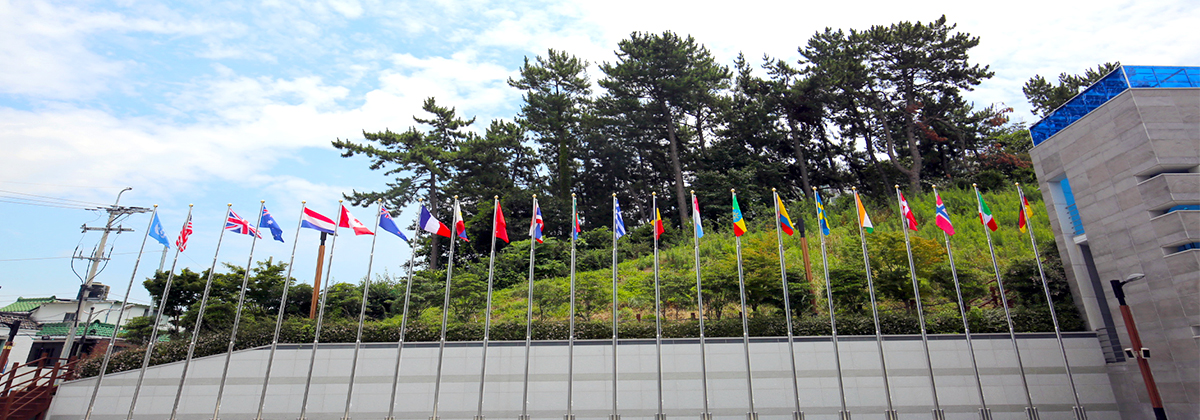
In front of the plaza of coexistence in the United Nations Peace Memorial, the flags of 16 combat support countries and 6 medical support countries are waving 24/7. Let’s be reminded of the preciousness of war veterans’ bravery, sacrifice, and peace by looking at the major historic records of 22 allied nations and listening to their military songs.
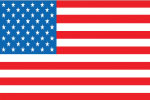
|
The United States ∙ A pivot in the UN Forces during the Korean War, the largest scale of dispatch * The number of US forces among 1.95 million forces from UN Allied Nations was 1.79 million, the majority (92%) ∙ The first battle between the Smith Special Force, the American ground force, and North Korean forces was around Osan on July 5th, 1950. ∙ The Nakdong River Defense Line was formed in compliance with General MacArthur’s instructions, “no withdrawal from South Korea,” securing the Busan perimeter by mid-August 1950. ∙ To reclaim Seoul, Operation Chromite was put into action, advancing toward the North and reclaiming/retreating from Pyeongyang ∙ Defended the 4th offensive from the four divisions of the communist Chinese army in Battle of Chipyong-ni ∙ ollowing the 5th offensive, during the negotiations for a ceasefire, battles began: the Battle of Bloody Ridge, the Battle of Heartbreak Ridge, the Battle of Old Baldy, and the Battle of Triangle Hill. ∙ Conclusion of ROK-US Mutual Defense Treaty on October 1st 1953 |
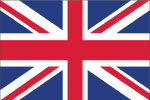
|
The U.K. ∙ The 2nd largest dispatch ∙ From the beginning of the War, ground, naval forces and the marine corps were dispatched, playing a leading role in the Korean War along with the U.S. * Effects of Canada, Australia, New Zealand, etc. joining the Korean War ∙ The 27th division of UK forces sent to the front line of Nakdonggang on September 4th, 1950, defeating the North Korean forces’ attack ∙ During the 5th offensive of the Communist Chinese Forces, Battles of Seolma-ri in the Southern part of the Imjin River ∙ The UK marine corps participating in a feint operation in Gunsan during the Operation Chromite/p> |
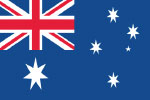
|
Australia ∙ Following the US, a country dispatched all forces including ground, naval, and air forces, though the scale was small ∙ Australia’s frigate and destroyer were assigned to the U.S. Far East Naval Force and joined in the War at the end of June in 1950 * Missions to protect a fleet of transport ships between Japan-Busan, missions to protect aircraft carrier during the Operation Chromite ∙ The Australian air force 77th fighting battalion joined in July 1950 ∙ Advance team of ground forces, Australia rear armed forces in Korea, 3rd battalion arrived in September 1950 * Sariwon Battle, Youngyoo Battle, Parkchun Battle, Icheon Battle, Mt. Maryang Battle, Gapyeong Battle, etc. ∙ Attack of the Chinese Communist forces in April 1951, the Chinese Communist forces are defeated after a vigorous battle that lasted 24 hours, Australia receives a U.S. Presidential Unit Citation medal for blocking enemy entry to Gapyeong, a memorial wall for the 3rd battalion is established in the battlefield of Jukdunri |
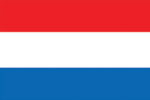
|
Netherlands ∙ In July 1950, one destroyer is rushed to Korean waters, joining the British Far East Fleet * Afterwards, a total of 6 ships—3 destroyers and 3 frigates—alternately perform operations such as sea patrol, blockage, etc. ∙ Civilians and not the government are the first to demand the ad hoc committee of the volunteer soldiers to participate in the Korean War ∙ In November 1950, the government recruits volunteer soldiers, arrives in Busan, and assignments are carried out in the U.S. 2nd division * The battle of Hoeng-seong, the Defense of Hill 325, the battle of Injae, the battle of Mt. Daewoo, etc. ∙ The Korean Presidential Unit Citation medal received on October 1st, 1953 |
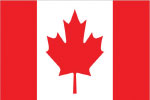
|
Canada ∙ On July 30th, 1950, 3 destroyers perform assignment operation to the Command of the U.S. Far East Naval Forces * During its participation in the Korean War, a total of 8 destroyers are divided into groups of 3 destroyers each, which are then dispatched in turn * Escorting a fleet of transport ships between Busan-Japan, escorting a fleet of transport ships during Operation Chromite, escorting aircraft carriers, etc. ∙ In November, 1950, the 25th Canadian brigade founded by the Canadian Army special unit recruitment activities ∙ In December, 1950, PPCLI 2nd battalion arrives in Busan, carries out assignment operations to the British Commonwealth’s 27th brigade * Battle for entry to Heungcheon, the Battle of Gapyeong, the Battle of Gowang Mountain, etc. |
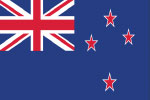
|
New Zealand ∙ In July 1950, 2 frigates are dispatched to Korean waters, and assigned to the Command of the U.S. Far East Naval Forces ∙ In December 1950, dispatch troops recruited, the 16th artillery regiment founded/dispatched (Korean Force, dubbed “Kayforce”) ∙ British Commonwealth’s 27th Brigade assigned, encirclement attack of the Chinese Communist forces defeated (Battle of Gapyeong, Battle of Maryang Mountain) ∙ The 16th field artillery regiment receives Korean Presidential Unit Citation medal |
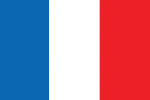
|
France ∙ On November, 1950, a battalion of French forces consisting only of volunteer soldiers arrives in Busan harbor and is assigned to the U.S. 2nd division in Suwon/carries out operations * General Monclar commands the battalion, General Monclar was a general of the Foreign Legion at the time of 2nd World War and is transferred as a lieutenant general. * Participated in the Battle of the Twin Tunnels, the Battle of Jipyung-ri, the Battle of Heartbreak Ridge ∙ In recognition of leading the Battle of Jipyung-ri to a success against the aggressive attack of the Chinese Communist forces in February, France receives a U.S. Presidential Unit Citation medal and receives a citation of the French Republic |
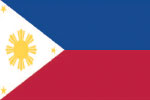
|
The Philippines ∙ On September 1950, the Philippines is the third country to dispatch 1 Ground Forces Battalion combat team following the U.S. and the U.K. * Although the Philippines suffered from the colonization of Spain, the U.S., and Japan for a long period of time, and the country was unstable due to the Hukbalahap Rebellion at the time of the outbreak of the Korean War, the Philippines dispatches their soldiers in order to prevent the spreading of communist forces throughout Asia. ∙ Considering the defense of the Nakdong River defense line is in a critical situation, the Philippines dispatches its most elite troop, the 10th battalion * The battle near Shingye, entering the Han River and reclaiming Seoul, the battle near Gunja Mountain, the battle of Eerie Hill ∙ Even after the ceasefire, the Philippines provides considerable support for the revival of Korea and, even after the retreat of the main forces, the Philippines posts a small number of military troops at the UN Forces Headquarters and supervises the ceasefire agreement as part of the UN Forces. |

|
Türkiye ∙ On October 17th, 1950, the 1st regiment of the Turkish forces arrive in Busan harbor and is assigned to the U.S. 9th legion ∙ In November 1950, Türkiye engages in a vigorous battle with the 38th army of the Chinese Communist Forces, with a critical loss (Battle of Gunuri) ∙ In January 1951, Türkiye demonstrates the bravery of the Turkish forces by winning the Battle of Kimryang-jang (present day Yongin) ∙ In November 1951, Yanggu Sandbag Castle Battle of the 2nd brigade ∙ In August 1952, the 3rd brigade of the Turkish forces is the third military unit to join the Korean War and, by completely defeating the Chinese Communist Forces, the Turkish forces demonstrated their strong will to retain the military camp of its 3rd brigade during the Nevada Outpost Battle. |
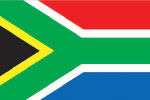
|
The Republic of South Africa ∙ South Africa actively participates in UN activities and, on July 1st, 1950, South Africa declares a statement supporting its resolution for armed forces assistance to the Republic of Korea ∙ In November 1950, the 2nd maintenance battalion arrives at the Suyeong Airfield in Busan and is assigned to the U.S. 18th Fighter-Bomber Wing |
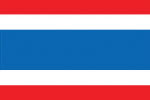
|
Thailand ∙ In Asia, Thailand is the first country to express its will to voluntarily participate in the war. ∙ On November 7th, 1950, the Thai fleet (1 Ground Forces Battalion Combat team, Red Cross Medical Corps agents) arrives in Busan * Thailand defends the Gaeseong region and carries out a protection operation for the retreat mission ∙ After transporting its military forces, the Thai fleet carries out an assignment operation to the 95th mobile troop of the Command of the U.S. Far East Naval Forces ∙ During the Battle of Pork Chop Hill, Thailand blocks 3 major aggressive attacks by the Chinese Communist forces (after this battle the Thailand soldiers are referred to as the Little Tigers) ∙ Thailand’s participation in the Korean War becomes an excellent example of dismissing the Soviet Union’s propaganda claiming that only Western Imperialists shall dispatch their military forces to Korea. |
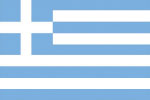
|
Greece ∙ In December 1950, upon its arrival after founding the 13th Transport Aircraft Formation, the 13th Transport Aircraft Formation is assigned to the 5th Air Force, and the Ground Forces land in Busan and is assigned to the U.S. 1st Cavalry Division and carries out operations * The battle near Icheon, the Hongcheon - Chuncheon - Hwacheon advancement battle, the battle of Hill 313 (the Scotch Hill), the battle of Nori Hill ∙ In June 1953, by defeating the Chinese Communist Forces of a regiment unit with its company unit during the battle of Hill 420 (the Harry Hill), the Greek forces prove their bravery in combat ∙ With the retreat of the French Battalion in the Fall of 1953, 1 Greek battalion arrives in Korea to fill in the vacancy ∙ Initiates retreat in March of 1955 |
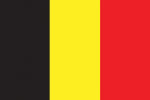
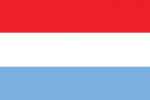
|
Belgium, Luxembourg ∙ After recruiting volunteer soldiers, Belgium and Luxembourg dispatch a joint battalion * Belgium supplied 2,000 soldiers including soldiers in active service, reserve forces, former soldiers of the Resistance, and even the former Minister of Defense of Belgium Henri Moreau de Melen ∙ In January 1951, the joint Belgium-Luxembourg battalion arrives in Busan and is assigned to the U.S. in the 15th regiment of the 3rd division * Dongducheon advancement battle, the battle of Geumgul Mountain, the battle of Hakdangri, the battle of Jatgol |
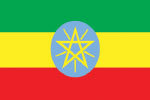
|
Ethiopia ∙ Although the domestic situation in Ethiopia was chaotic, Ethiopia manages to form 1 battalion by recruiting soldiers of the Royal Guard * The Emperor of Ethiopia Haile Selassie names the troop being sent to the Korean War as the Kangnew Troop ∙ In May 1951, the Kangnew battalion and agents from the Support Headquarters arrive in Busan and are assigned to the U.S. 32nd regiment of the 7th division * Jeokgeun Mountain-Samhyeon Battle (U.S. Presidential Unit Citation medal), the Triangle Hill battle, the battle of York/Uncle (receiving the Korean Presidential Unit Citation medal) ∙ In addition to the 1 infantry battalion, Ethiopia dispatches a liaison officer contacting the Ethiopian headquarters and the UN Forces, dispatches nurses of the Red Cross to hospitals of the UN Forces, and sends medical supplies to Korea through the United Nations International Children’s Emergency Fund both during and after the war |
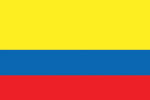
|
Colombia ∙ The only Latin American UN member state to participate in the Korean War ∙ In June 1951, Colombia’s first 1st infantry battalion arrives in Busan and is assigned to the 21st regiment of the 24th division * The Geumseong Advancement Battle, the Defense of the Battleship Missouri, the Battle of Deokhyeon-dong, the Battle of the Bulmo Hill ∙ From May 1951 to October 1955, Colombia dispatches a total of 3 Frigates and participates in the war in turn |
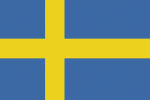
|
Sweden ∙ Although Sweden was a permanently neutral nation, with the UN’s resolution to provide military support to Korea, Sweden dispatches its field hospital to Korea ∙ On October 2nd, 1958, Sweden, Denmark, and Norway cooperate with the Korean governments and the UN Korea Reconstruction Agency to establish the National Medical Center in Seoul, and Sweden manages this medical center until February 1972. ∙ In September 1950, the Red Cross Hospital of Sweden arrives in Busan, is assigned to the 8th U.S. army and then opens a rear line hospital accommodating 400 sickbeds at the Busan Commercial High School * Starting from the end of 1951 as the battle front settles down, treatment of civilian patients becomes available A separate civilian clinic opens in early 1952 ∙ After the ceasefire, Sweden focuses on medical treatments for civilians, performs BCG vaccinations, endeavors to eradicate Tuberculosis ∙ Up until its retreat in July 1957, among the medical support corps dispatched to Korea, Sweden remains the longest in Korea in order to treat patients in critical condition and contribute to the improvement of medical technology in Korea |
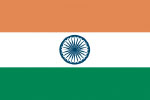
|
India ∙ As a country upholding its non-alignment movement, although it has withdrawn from the UN’s resolution for aiding Korea, India agrees to participate in the relief of the Korean civilians. India decides to dispatch a medical support troop ∙ In November 1950, India’s 60 para field ambulance arrives in Busan and supports the British Commonwealth Forces including the 27th British Commonwealth brigade, etc. ∙ 1At the end of August 1953, the Indian government dispatches a Custodian Force for the Neutral Nations Repatriation Commission to Korea, and the 60 para field ambulance leaves the 1st British Commonwealth division to join the Custodian Force * The UN entrusts India with the main activities related to the repatriation of POWs, and India commands the Custodian Force |
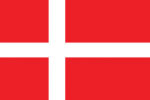
|
Denmark ∙ Among the UN member states, Denmark is the first to declare its wish to provide medical support, and, in August 1950, the Danish hospital ship Jutlandia is dispatched to Korea * The Jutlandia, weighing 8,500 tons, carries a medical staff, an administrative staff, and a vessel navigation staff (approximately 100 staff members), and arrives in Busan in March 1951 ∙ Starting from March 1953, Denmark cooperates with the Incheon Christian Hospital and expands its treatment range to civilian patients ∙ After the ceasefire, Denmark donates its medical supplies and medical equipment provided in its medical ship to civilian hospitals through a UN foundation in Korea Denmark participates in the founding and management of the National Medical Center in cooperation with Sweden and Norway |
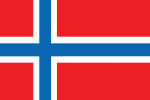
|
Norway ∙ In early July 1950, Norway proposes to support ships for marine transport and sends out support funds and clothing through the Red Cross ∙ In June 1951, the Norwegian mobile surgical hospital consisting of 83 staff members arrives in Korea and provides medical support in the U.S. first corps. * Equipped with modern medical equipment, such as operation rooms, dentist, radiation room, etc., and equipped with a high quality field hospital and the required skills. ∙ Actively participated in the founding and management of the National Medical Center in cooperation with the governments of Sweden and Denmark |
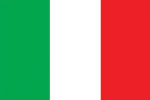
|
Italy ∙ Although Italy was one of the founding countries of NATO at the outbreak of the Korean War, Italy decides to dispatch its medical corps as a non-member of the UN ∙ In November 1951, the 68th Red Cross Hospital organization unit arrives in Busan * The hospital accommodates 150 sickbeds and operates internal medicine, general surgery, pediatrics, dentistry, radiology, as well as civilian treatment |
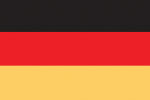
|
Germany (West Germany) ∙ In April 1953, West Germany decides to dispatch a medical support group for the purpose of supporting the UN Forces and makes an official announcement. However, the dispatch takes place only after the ceasefire agreement in 1954, leading to medical activities focusing on treating civilians rather than those wounded in combat * Due to its dispatch to Korea after the ceasefire agreement on July 27, 1953, although West Germany was excluded from the list of medical support nations, its devoted medical support activities were reassessed in June 2018, and the Ministry of Defense officially announced its recognition of Germany as one of the UN Medical support countries ∙ Germany’s activities were supported through the German Red Cross and opens the Busan West German Red Cross Hospital after taking over the Busan Women’s High School ∙ An advance party arrives in January 1954 and opens the hospital on May 17th, and the hospital is shut down on March 14th, 1959 * The hospital accommodates 250 sickbeds and operates internal medicine, general surgery, dentistry, radiology, gynecology, and a pharmacy ∙ Germany also makes outstanding contributions in training Korean medical staff |
Read more on the participation of the UN Forces in the Korean War






